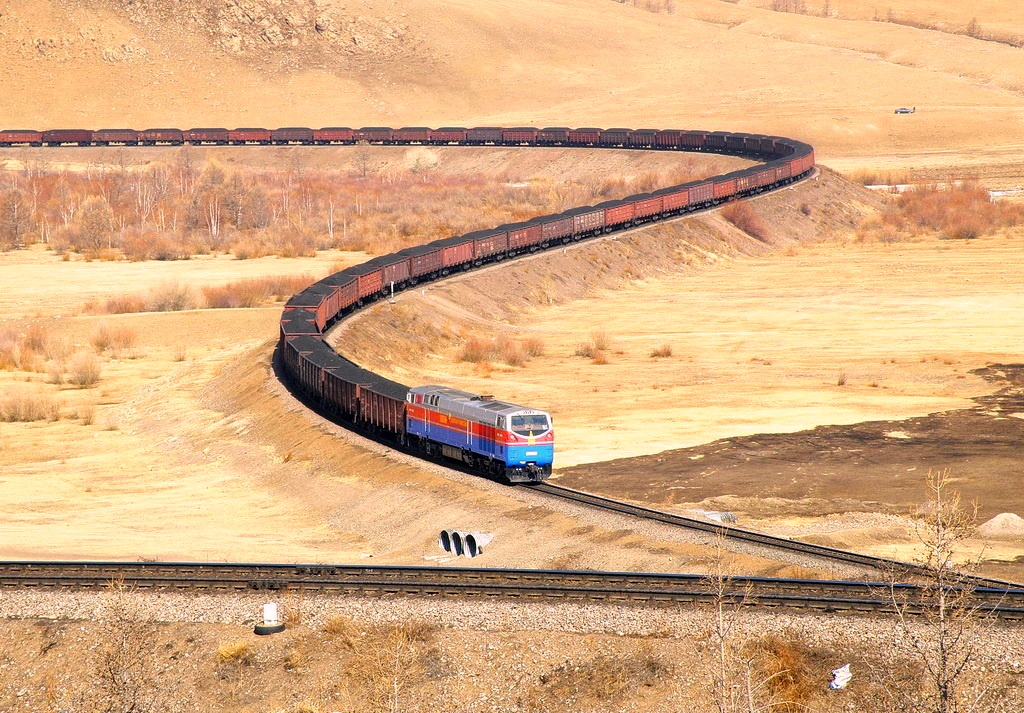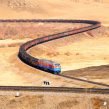
The Mongolian-Russian-Chinese Northern Railway Corridor
Publication: Eurasia Daily Monitor Volume: 11 Issue: 15
By:

On December 18, 2013, in Ulaanbaatar, the Mongolian government’s Ministry of Road and Transportation and the Mongolian-Russian shareholding “Ulaanbaatar Railway” Society organized the first tripartite consultative meeting of “The Mongolian-Russian-Chinese Northern Railway” (news.mn, December 19, 2013). Because of the lack of existing rail freight loading capacity along the Trans-Siberian line, Mongolia invited representatives of Russia and China to launch a new organization to construct a comprehensive strategy for improving railway efficacy. This new initiative meshes well with a project of the joint stock company Russian Railways (RZD) to create a transit East-West corridor through its subsidiary company “Russian Railways Logistics.” The Northern Railway Corridor will increase rail capacity from Mongolia into Russia at the border site of Naushki and into China at Erenhot, terminating at Jining.
Mongolia supports increasing the number of transit railways because it wants more Sino-Russian cargo, which has been declining. For example, until 2006 Mongolia transported up to 6 million tons of petroleum a year to China through transit rail, but today only 1.4 million tons is being transited. Much of this was one-way freight from Russia to China, with empty wagons returning. At the consultative meeting, the two sides agreed to fill the rail containers both ways, with Russia sending mainly mining products to China and China transporting finished goods to Russia (UB Post, January 9). At the conclusion of the consultative meeting, a statement was signed by Yondon Manlaibayar, chairman of the Ministry of Roads and Transportation’s Coordinating Department of Railway and Maritime Policy for Mongolia, Deputy Chairman Mitsuk for Russia, and China’s Chen Lanhua. The parties agreed to work out an integrated action plan in the first quarter of 2014 to develop a transit railway in the direction of Ulan-Ude–Naushki–Sukhbaatar–Zamyn-Ude–Erlian–Jining.
In his presentation, Mongolia’s Road and Transportation Minister Amarjargal Gansukh explained that in the rapidly developing region, more diverse and complex services were required from the international transportation and logistics market. “The capacity of the transportation corridor, flexibility of nations in communication, smart and swift border customs services, the prices and tariffs competing with other railway transportation corridors, and many other factors are playing a significant role in complex transportation logistics services. We hosted the present consultative meeting with an aim to enhance cooperation with our neighboring nations to develop the capacity of our railways corridor as a first step towards reaching the goal.” (The Mongol Messenger, No. 51, December 20, 2013). Gansukh promised that Mongolia would pay more attention to upgrading transportation facilities that would meet all necessary transit requirements for enhancing the trans-northern railway corridor running through Mongolia from Russia’s Ulan-Ude to Jining province in China.
RZD Deputy Chief Igor Mitsuk concurred: “The three nations have a common interest to implement the project on freight and goods transportation from China to Europe and from Europe to China through Mongolia,” and was confident China, Mongolia and Russia’s common interest to improve freight forwarding through this corridor would enable them to find workable solutions (The Mongol Messenger, No. 51, December 20, 2013). The Russians are currently able to use up to 25 percent of their railway capacity from Naushki and promised that if Ulaanbaatar is able to enhance its capacity, Russia would follow. Russia stated that they were also ready to assist with blueprints, investments and technology issues in the renovation of Mongolia’s Ulaanbaatar Railway (UR) (UB Post, January 9).
Chen Lanhua of Chinese Railways General Authority also expressed confidence in building upon previously successful cooperation among China, Russia and Mongolia. He noted Beijing placed a high priority on this first tripartite meeting. The Chinese side reported that they have been working on blueprints for reconstructing the railroads with dual rail beds and electrical power. Discussion also included in-depth analysis of railway transport conditions and recommendations for technical innovation along the main routes; trade goods and turnover between China-Russia and China-Europe; the role of railway transportation through Mongolia; tripartite cooperation in the technical reforming of the UR; plans to develop the Erlian-Jining railway; and the development of modern transportation and logistics through Mongolia to connect China with Russia and Asia with Europe (montsame.gav.mn, December 19, 2013).
One month later, Yondon Manlaibayar, chairman of the Ministry of Roads and Transportation’s Coordinating Department of Railway and Maritime Policy for Mongolia, explained the details coming out of the inaugural meeting to the Mongolian media (UB Post, January 9). The UR, which in 2013—its most profitable year—transported 20.5 million tons of freight, is at the highest capacity limit of its current technology. During a November 2013 UR internal meeting, it was announced that the first phase of renovation that commenced in 2013’s fourth quarter is expected to be completed by 2015. This requires $257 million in expenditures to replace mechanical linkages, the widening of stations, and the lengthening of railroad junctions. The renovation would increase UR capacity from its current 20 million tons to 34 million tons. For the Mongolians, transit traffic is the most profitable means of transportation. However, their rails are mainly used to move domestic coal to the country’s electric power stations, which according to Manlaibayar is “non-profitable cargo.” Despite a capital loss for transporting coal of $14 million in 2013, the company is restricted by the government from raising fees. Therefore, Mongolia seeks to increase its transit capacity quickly up to 10–20 million tons. Estimates show that by 2020, 100 million tons of mining cargo is expected to be exported, but this is impossible with today’s UR capacity. UR is 1,800 kilometers long, and plans call for adding an additional 5,600 kilometers to the length. Therefore, the Mongolians are seeking to create two more transit corridors in addition to the existing one: one transit corridor would connect Russia and China and the other would transport Mongolian domestic cargo to its neighbors.




